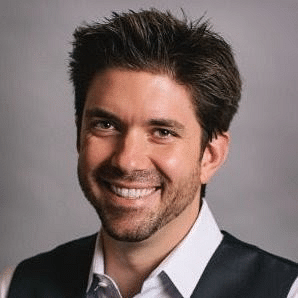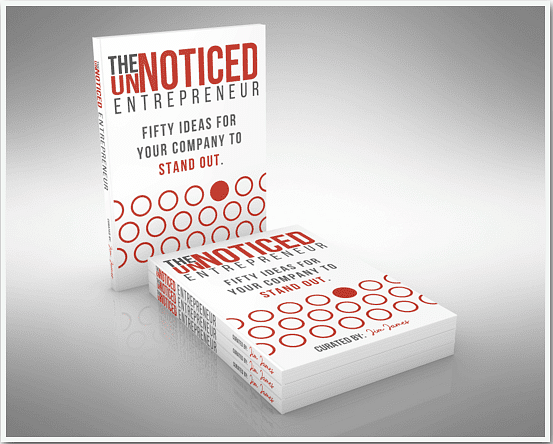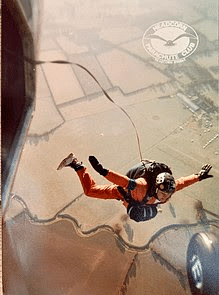
If you’re ‘Unemployable,’ this is how you can get your business noticed
By Jim James, Founder EASTWEST PR and Host of The UnNoticed Entrepreneur.
Earlier this month, I was privileged to be interviewed by Jerod Morris. I got to talk before his and Brian Clark’s Unemployable Initiative community about my SPEAK|PR program. The community (which I am a part of) is for “freelancers, solo entrepreneurs, and startup founders to get actionable advice and valuable resources.”
In this article, I’m sharing the first part of what I presented during the feature.

Image from Jerod Morris’ LinkedIn
Image from Unemployable
Talking about Getting Noticed
Getting noticed is one of the recurring themes that come up whenever Jerod asks about the challenges that Unemployable members face in building their audience-based businesses.
With so much content and distractions vying for the attention of your ideal audience members, how do you get your content, your story, and yourself in front of them — in a way that compels them to pay attention? In the book that I self-published, I shared how to do just that.
The UnNoticed Entrepreneur book compiles 50 ideas on how companies can stand out. It includes my five-stage SPEAK|PR methodology, which creates a framework for business owners to build a simple and structured approach to their public relations. During the talk, I discussed some of the most relevant lessons from the book that can help entrepreneurs get noticed by the people who matter.
Recounting my Beginnings
In my author profile, it says that my “first brush with getting noticed was at 18 when [I] jumped out of a plane in return for sponsorship and received expedition equipment in return for media publicity.”
I grew up in the southeast of England to wonderful parents who are not particularly commercially savvy. One was an academic; one was a social worker. When I was younger, I earned a spot in Operation Raleigh, which is an expedition to go to Australia. Back then, I was selling toys in a shop and when I did the math, I realised that I wouldn’t get enough money before the expedition left.
So I thought of doing something that I and most people would be afraid of: jumping out of a narrow plane. I found an airfield near me called Headcorn and I went around and asked people to sponsor me. Amazingly enough, I raised much more money by jumping out of that aeroplane than what I would’ve earned in a year of working for somebody selling toys. It’s kind of a light bulb moment for me.
The issue was that I had the money for the plane, but I didn’t have the money for the expedition kit. What I did was to go to a local newspaper and say that if I go on this trip and I get some sponsorship, would they cover it? They said that it sounded interesting. I then went to a local hiking shop and said that if they’d give me some kit, I could get them into the newspaper.
I was 18 years old then and I didn’t know what I was doing — I haven’t heard of PR. To me, it seemed like a good way to bridge two people’s needs.
So jumping out of a plane was my first introduction to being an entrepreneur and being in the publicity space. And this shows that sometimes, ignorance is just the best formula for being brave.
Being Morgan’s Local Dealer in China
After that, I went to America to study at a university. I also got sponsored to go to Central America on an expedition. I kind of have this background of having adventures and getting them sponsored.
After starting businesses in England and America, I went to Singapore to start a PR firm back in 1995. In 2006, I went to China from Singapore and within about a year, I met a beautiful woman. When we had a baby on the way, I thought about how do I make more money when, actually, I’m going to have less time. Because in PR, you’re typically paid by the hour.
Back when I was starting, I thought that if I sold toys at four pounds per hour, I’d never get to my destination. I figured that the same was going to be true with PR selling time: I’m never going to make enough money just by raising money from time.
And then, at one point while I was in China and starting a young family, my cousin sent me a photo of a Morgan car. Morgan is a British car company that has been around since 1909. It inspired me to buy a Morgan sports car as I thought of it as a great antidote for me being a dad and losing my youth. I had the car imported to China.
The thing was that when I drove it to places, people would see and wonder what kind of car it was, thinking it was an old one when it’s actually new. I then asked a Chinese person if they'd like to buy one; they said yes. Afterwards, I rang Morgan and asked about their local dealer. With my PR background, I said that I can help their dealer sell cars in China. However, they said that they didn’t have one. It occurred to me that I was the first to import a Morgan sports car to the country.
This happened in 2011. A year later, I made an application to be the local dealer of Morgan and got to be appointed as the importer for the car company.
Then I found a free parking space in Tiananmen Square in Forbidden City, which is in the centre of Beijing. I drove my Morgan car there unannounced and without any permits. I also took a journalist that I’d met outside of a supermarket (he was taking pictures of my car). Before the police came, we got loads of photographs. Over the next seven years, I managed to build the Morgan brand in China.
My SPEAK|PR methodology really came out of some of the lessons that I’ve learned building a car brand in China — even though I did not speak Chinese and didn’t have an advertisement budget or any support from the manufacturer. It resonates with entrepreneurs whose offerings can provide a lot of value but don’t have a big backing; those who have something valuable to share that people will love only if they see it (which is exactly what happened when people saw the Morgan car).
The UnNoticed Entrepreneur Podcast and Book
When I went back to the UK, I started a podcast called The UnNoticed Entrepreneur. Now, I’ve already got 350 episodes and I’ve catalogued them under my SPEAK|PR process.
On the podcast, I interview hundreds of experts and fellow entrepreneurs on how they get noticed and what are the tools that they use. I’m a big believer that every entrepreneur deserves their thymos, which is the Greek word for recognition.
In my book, also called The UnNoticed Entrepreneur, I’ve basically curated select interviews from the podcast. I have Brian to thank for that. I was listening to his and Jerod’s 7-Figure Small podcast during one of my walks in the countryside and heard them talk about not needing to write everything because you can also curate the ideas of others. For the book, I’ve created the structure so that ideas flow and entrepreneurs can have the ability to put them into some system and context.
Image from Unsplash
In PR, there isn’t anything that’s really scary or clever: It’s simply about creating content and making that context-relevant. The part where most entrepreneurs and big companies fall in, however, is consistency.
Many create content that is self-serving. Companies talk about themselves. They create content and send it to their audience. However, it’s not really relevant at the time or the place where it’s going to be received by the audience. They also do it sporadically.
The SPEAK|PR Methodology
At my PR firm, we have these five stages called the SPEAK|PR methodology. Because you’re building trust with audiences, you have to do this consistently.
The essence of the “know, like, trust” principle is the trust part. You might get the liking from PR or advertising. However, unless they trust you, they won’t buy from you. And the key is the consistency of communication. It’s the same as any relationship with family, friends, colleagues, or teammates.
Public relations used to be about who you know. But in the last 20 years, there’s been a game change: It went from “The relationships matter” to “What you create matters.”
I created a very simple process because there’s already a lot of information on the internet, which is all very tactical. From what I hear from clients, most of them understand how to do LinkedIn or Facebook, but they don’t know how to integrate them. In this kind of rushed, short-term tactics, what entrepreneurs have lost is the ability to sit back and take a strategic overview.
SPEAK|PR is a simple acronym.
-
Storify. Storifying is about putting events into chapters and building a story around your brand. But, more importantly, it’s not just about your story — it’s the story of what we call the avatar. Most people think that the avatar is the customer. However, I think of it as three audiences, which include your customers, your employees, and your partners. All these three have to be aligned for your business to succeed.
If you think about Star Wars, the story is about Luke Skywalker. But there’s also Obi-Wan Kenobi as the mentor. In the SPEAK|PR program, the role of business owners is similar to that of Obi-Wan. Entrepreneurs are only coaches and mentors, so the story really needs to be about the person in the journey.
-
Personalise. When you’re personalising a message, it doesn’t just mean saying “Dear Jerod.” The message needs to be relevant to the person who’s going through that journey. If you look at Luke at the beginning, it appears that he doesn’t want to go on that journey. But eventually, he realises that it is his journey.
It’s all about personalising your message for the individual who’s going to hear it. It’s not just about making a simple name replacement.
Image from Unsplash
-
Engage. Engagement is creating compelling content that can be shared. Many companies create content about themselves and wonder why it doesn’t get shared with anybody else. Take note that the content that gets shared is content that’s proven to be new and easy to understand.
It has to be new because then, people will take notice of it. It also needs to be easily understandable. Because if it’s complicated, people won’t want to take the risk to share it.
-
Amplify. Amplification means using the technology available for entrepreneurs. These include all sorts of great Artificial Intelligence (AI) tools. This is the component that has really leveled out the playing field for businesses and big companies.
-
Know. To explain the “knowing” stage, I talked about the Active Communications Index (ACI). It’s a very simple tool that you can use to increase content creation, frequency of distribution, and the number of channels. My idea for this is for you to count your input and not the vanity metrics. If you only count the likes and the shares, you’re at the behest of the big organisations.
The Active Communications Index and the Cascade Theory
In ACI, you’ll identify how much content you create, how often do you share it, and via how many channels. The formula is Content x Frequency x Channels. It’s simple but unfortunately, when people create content, they tend to send it sporadically. They also don’t optimise all the channels.
The key idea of the SPEAK|PR program is to think about what you do, not necessarily what the platforms tell you the result is. It’s similar to when you work out in the gym every day. When you do a certain number of repetitions and carry a certain number of weights, you will get more fit and stronger.
Image from Unsplash
The ACI is simply about how much content is being produced by your company, where it is being distributed, when it is being sent, and how often. Each one of the elements has more depth to them. But during my presentation, I focused on the “when.” This is important especially for those running companies in different geographies. In my case, my firm has offices in Singapore and China.
When sending out content, you have to think about when someone is going to receive the information that you’re sending. Too often, people send information when it’s ready. But they’re not taking into account the time zones. If someone is on their way to school, it wouldn't be the optimal time for them to receive a tweet.
There’s also a theory called the cascade theory. It was discussed in a study by Peter Sheridan Dodds, a professor at the University of Vermont, and Duncan Watts who works at Google. And the idea is that it’s more important to find people who are easy to influence than deal with just one hero or heroine influencer.
For something to go viral or cascade, every recipient must share it. When one paid influencer shares it, it doesn’t necessarily mean that his or her network would also share it. If you want it to be viral, everyone on that network should also share it.
This is also a key point in my SPEAK|PR program. And it’s very reassuring for entrepreneurs because it's not about paying one person to tell your message to their network. It's about telling it to a lot of people who are receptive to your message and share it with their communities.
It's a fundamentally important point because it liberates you from thinking that you have to find one influencer.
For the ACI, I also presented a two-by-two matrix about content and consistency of delivery.
In the top-left quadrant are people who send dull content consistently. Today, there are a lot of companies, especially big ones, that send information from their corporate marketing department that isn’t very interesting. Yet they still keep sending it because their metric is how often content is being sent.
In the bottom-right part are opportunist people. These are people who deliver interesting information but inconsistently. Meanwhile, in the top-right are people who deliver innovative content consistently. And in the bottom-left are those sending out dull information every now and then — those are the UnNoticed. While they're UnNoticed, it doesn't mean that they can't be helped.
Based on this matrix, Jerod and Brian are considered key communicators because they consistently deliver innovative content. This is also why they’re able to build communities such as the Unemployable Initiative.
This article is based on a transcript from my podcast The UnNoticed Entrepreneur, you can listen here.
Cover image by bruce mars on Unsplash









